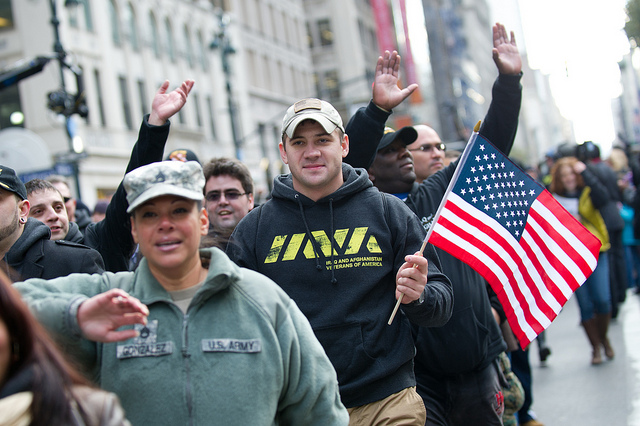
Data visualization: How long does it take U.S. veterans to get critical services at the Department of Veterans Affairs?
This week, Knight Foundation announced it will support a new data project to visualize the amount of time Iraq and Afghanistan veterans wait for VA services, including healthcare and education benefits. The effort is an example of the kind of projects Knight is seeking to fund through the Knight News Challenge: Data, which accelerates breakthrough ideas that use data to inform and engage communities. The deadline for the challenge is noon ET Thursday June 21. Here, Dana Morrissey, chief engagement officer of the Iraq and Afghanistan Veterans of America talks about the project.
Iraq and Afghanistan veterans filing a disability claim in Northern California have to wait 320 days for a ruling, according to a local congressman. That’s a backlog of a nearly a year for veterans seeking help for the back pain, post traumatic stress disorder, ear ringing and other conditions suffered through service.
While the problem is particularly acute in California, veterans across the United States have shockingly long waits for a variety of Veterans Affairs (VA) services, including mental health care – with 51 percent of veterans seeking help having to wait 50 days on average for a full evaluation.
Thanks to support from Knight Foundation, Iraq and Afghanistan Veterans of America (IAVA) will hold the VA accountable by creating an interactive online tool that crowdsources and visualizes the true wait times for three VA services: mental healthcare, disability claims processing and new GI Bill application processing.
Verified veterans will input their personal wait times, to help visualize the backlog by benefit and geographic region. Additionally, the tool will track the problem over time – noting progress and worsening conditions. This iteration focuses exclusively on the experiences of Iraq and Afghanistan veterans, though it may be expanded in the future to capture data from veterans of all generations.
We’re excited that this data visualization project will empower veterans to collectively raise their voices, point out problems in geographic areas, allow local media to better follow veterans issues in their communities, as well as help the private and nonprofit sectors direct resources and support where it is most needed.
Our veterans stepped up to serve their country with honor and pride – something that less than 1% of Americans have done since 9/11. They should not have to wait for the healthcare services and educational benefits they need and earned.
Recent Content
-
Journalismarticle ·
-
Journalismarticle ·
-
Journalismarticle ·


